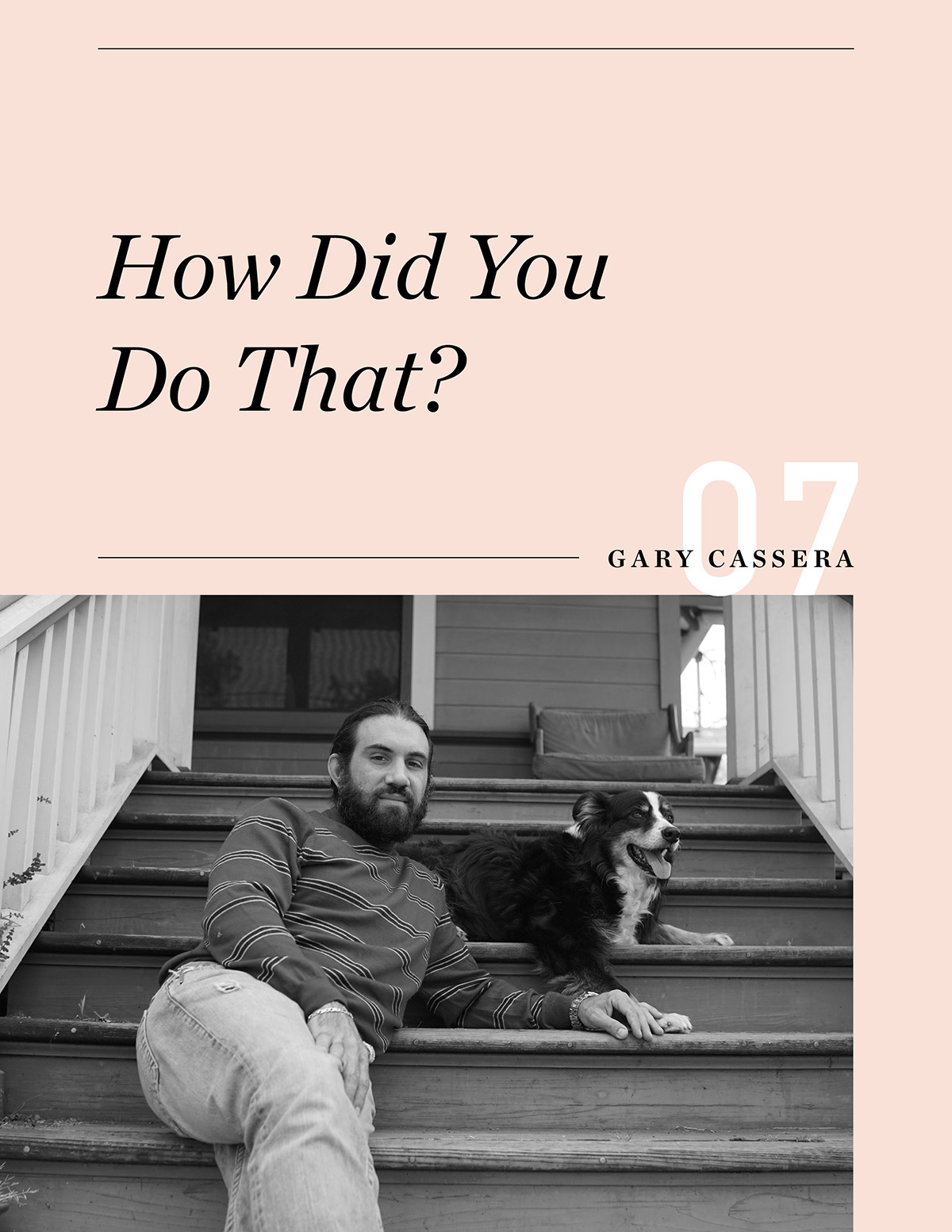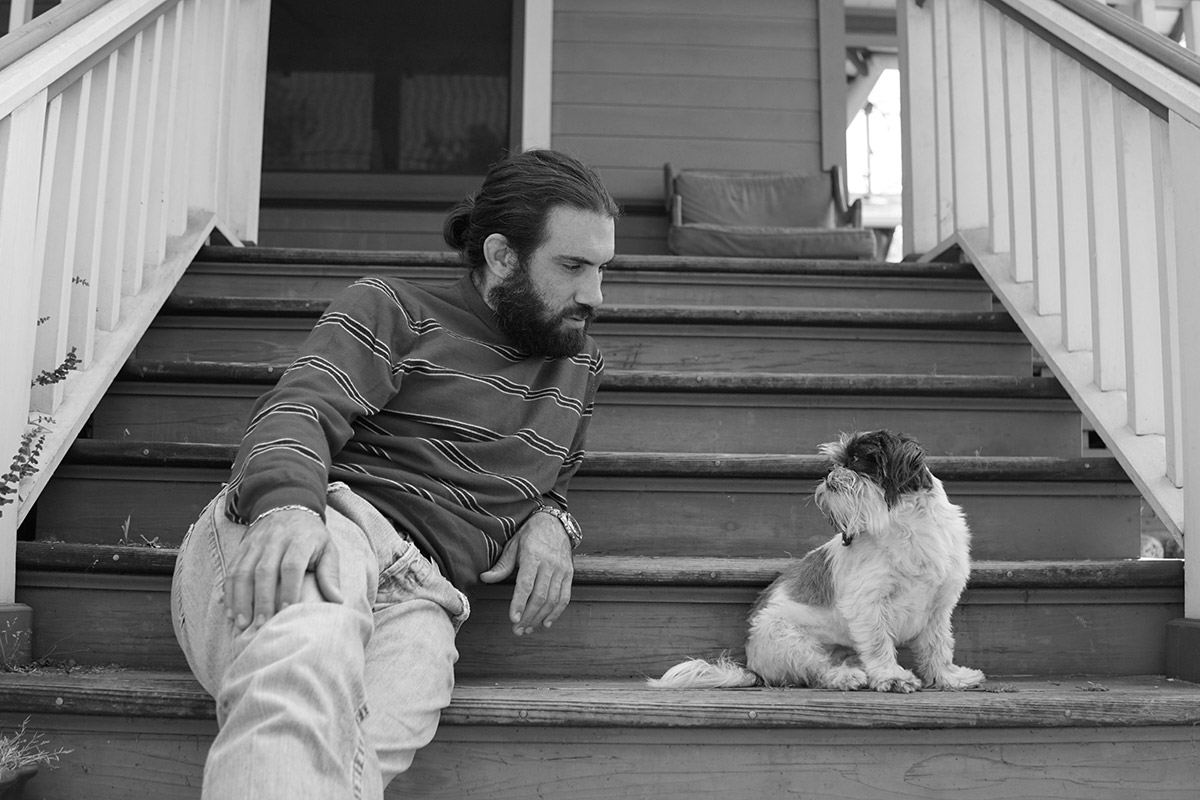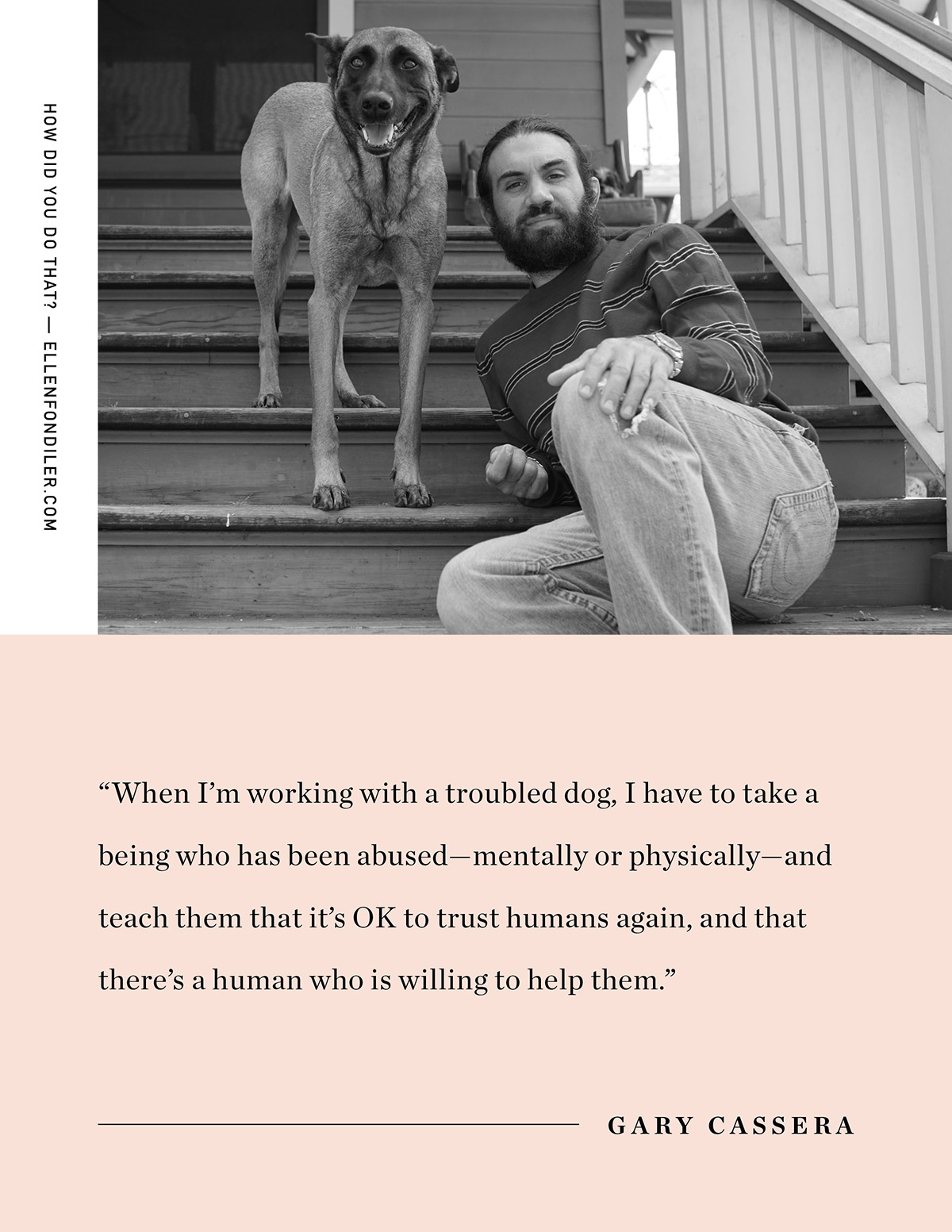
Whenever I meet someone who’s got a really cool job, who runs a thriving business, or who has completed an amazing project, I always want to know: “How did you do that?”
I’m always curious to hear the “behind-the-scenes story”—who they emailed, what they said, how they got their first client, how they got their foot in the door—the exact steps that they took to achieve their goal.
HOW DID YOU DO THAT? is an interview series where we get to hear the REAL story behind someone’s success—not the polished, neat and tidy version.
To see a complete list of all the interviews that have been completed to date, head over here.

Name: Gary Cassera
Location: Los Angeles, California
Profession: Dog trainer & owner of Balanced Dogs LLC, a dog walking, training, daycare, and boarding company
How did you become a professional dog trainer? Was it something you always wanted to do, ever since you were a kid? Did you have a totally different career prior to working with dogs?
Before becoming a dog trainer, I actually worked as a tennis instructor. By the time I got to my mid-twenties, I’d spent more time on a tennis court than any human probably should. My knees were sore, and my mind was ready for a new challenge.
I’ve always been interested in dogs ever since I was a little kid. Growing up, my dad had a German Shepherd named Gretchen who was my best friend in the world. I felt a great connection to her. She was the only reason I went to visit my dad. Often, if I got in trouble, Gretchen learned to come to my defense whether I was guilty or not.
Recently, my mom gave me a project from 1st grade that said I wanted to work with dogs as my grown-up job. So obviously, I’ve always loved dogs! In my mid-twenties, when I was considering my next career move, doing “something with dogs” just felt like the right choice.
Lots of people fantasize about quitting their job and doing something outdoorsy, exciting, and fun—like dog walking or dog training. But you didn’t just fantasize about it. You actually did it! Walk us through the sequence of events. How did you become a dog-entrepreneur?
After my wife and I rescued a dog named Sammy, we realized—very quickly—the Sammy had a lot of “issues.” He was kind of like the “bad boy” character in a movie that you want to root for, even when he’s doing all kinds of naughty things. Sammy had a rough past, and he was pretty tortured and anxious. He’d snap at people, bark, and exhibit all kinds of hostile behavior.
We tried to “fix” Sammy, but we didn’t know what we were doing. No matter what we tried, his behavior just seemed to get worse.
Then one day, I was watching The Dog Whisperer TV show, and I had an epiphany. “Maybe Sammy’s not a ‘bad dog’. Maybe the problem is… me. Maybe I’m not giving Sammy what he needs in order to feel safe and happy.”
Through the graces of a higher power, later that week, an old friend asked how Sammy was doing. I told her the truth. ”Not good.” As luck would have it, she knew a woman who’d trained with Cesar Milan, aka the Dog Whisperer. It felt like fate! I hired her, and I learned a whole new way of “being” with dogs. My wife and I learned how to give Sammy the environment he needed, and how to communicate with Sammy in dog-language, not people-language. In no time, Sammy’s behavior totally changed.
The change was so dramatic that our neighbors started getting curious. While walking Sammy around the neighborhood, they’d come up to me and say, “Sammy seems different. What have you been doing?” Pretty soon, they started asking, “Well, can you help out with my dog, too?”
One thing led to another. First, people started asking if I could walk their dogs. Then they started asking for training tips. Then they started telling their friends about me. Meanwhile, I continued studying and absorbing as much information as I could. I signed up for more training with top dog professionals—including a guy named Michael Ellis who trains police dogs to do drug-sniffing and tracking. I wanted to learn as much as I possibly could. Eventually, Michael asked if I’d like to move out to California to join his team. I said “Yes,” and that’s probably the moment when my career in the dog industry felt “official.”
I don’t work directly with Michael anymore—that was a couple years ago. These days, I’m completely self-employed, which I love!
Let’s talk about self-employment for a second. Can you remember how you got your very first dog-walking client? How did you get people to hire you, back when nobody knew about you?
My very first client was one of our neighbors. Most of my initial clients were neighbors and friends—people I already knew, people in my immediate social circle.
I’ll be honest: in the beginning, I didn’t have any kind of “marketing strategy.” I just loved being with dogs, walking dogs, and talking to people about dogs. When I walked down the street with a pack of 5, 10, or even 20 dogs, wearing flip flops and a big hat and smiling, people would stop and smile back. They’d start chatting with me. They’d ask for my info and often, they’d call me up and hire me. Also, I’d pass out flyers and I’d drop business cards on every poop bag station I saw. All of my “marketing” was really organic. I just did what felt right.
Over the years, I’ve gotten more organized with my marketing. These days, I’ve got a website, a newsletter, a podcast, all that kinda stuff. But in the early days, it was just me, a bunch of dogs, a handful of business cards, and positive word-of-mouth referrals from clients. That was enough to get things going!
If someone wants to become a yoga teacher or fitness trainer, typically, they’ll enroll in a program, pass an exam, and earn a certification. Is it the same thing with dog training?
The interesting thing about dog training is there’s no real method, school, or certification that is “the industry standard.” It’s not like you go to college and major in “Dogs” and boom, now you’re a qualified dog trainer. Every dog trainer has their own unique career path.
The best advice I can offer is to study dogs—not just textbooks. Learn and grow from your fears, and always be compassionate for your client’s situation. I mean, nobody sets out to ruin their dog. People make mistakes with their dogs, but it’s usually not because of any malice. They just don’t know what they’re doing.
As a trainer, you can provide information and guidance—but then it’s up to your client to make changes. Changing means being uncomfortable. Dogs are OK with change. Humans, not so much. Humans like to do what they know and some struggle to change. I sometimes joke that “dog training” should really be called “human coping skills,” because that’s what my work feels like most days.
Cesar Milan, the Dog Whisperer, has become one of your mentors. How did you manage to get a celebrity mentor like Cesar? How did you get in touch with him?
When you’re looking for a mentor, the most important thing is to figure out why you need them right at that moment. I’d been walking 20-30 dogs a day, and my dog walking business was going really well, but I was ready to “level up.” I wanted to learn more–and I wanted to learn from the best.
Google was my best friend. I researched every article that Cesar had ever written, every interview, every assistant and former employee. Eventually, I learned about a program that Cesar was leading at his center in Los Angeles. To attend the program, you had to apply. Like thousands of other people, I filled out the questionnaire and submitted it along with a short video where I introduced myself and shared what I was hoping to learn. I never heard back. Not even an automatic email confirmation.
But I really, REALLY wanted to meet Cesar, so I didn’t give up. I did some more Googling, and I found the name of a guy who worked closely with Cesar. Then I did something a lot of folks don’t do–I just called him up. He answered, and I was nervous, but I just started talking. 45 minutes later, he invited me to Cesar’s dog psychology center for a week of hands-on learning. SCORE!
Spending a week at Cesar’s center allowed me to hang out with his team, and they invited me to come back again. After several visits, I was offered a full-time position there. Cesar has taught me many things about myself, Mother Nature, and working with clients. So, to sum up how I connected with Cesar, the answer is: Googling, more Googling, and then finding the courage to make one phone call that changed my life!
What’s your favorite thing about your work?
It causes me to be constantly compassionate. When I’m working with a troubled dog, I have to take a being who has been abused—mentally or physically—and teach them that it’s OK to trust humans again, and that there’s a human who is willing to help them. Developing this kind of compassion has helped me in my business, in talking to strangers, even in my marriage.
Most importantly, I get to help create happy human-dog relationships. I get to keep dogs alive and in their homes, not in shelters or on the streets. That feels so good.

3 Things
If someone is interested in becoming a professional dog trainer like you, what are the first 3 things they should do?
1. Respect the language of dogs.
Dogs think like dogs—but humans often expect them to think like humans, and to understand what we want, in our own language. If you look at a “problem dog,” you’ll find that the real “problem” is a human owner expecting their dog to act like a human.
2. Understand that you’re going to be working with people, not just dogs.
You can’t solve an emotional problem with a physical solution—like a special leash or collar. Those are just temporary fixes. To create real change, the human owner has to learn how to “be different” with their dog. They might have to learn how to be something that feels uncomfortable—being more confident, more patient, more self-aware. Getting people to change is much harder than getting dogs to change.
3. Create a list. Keep checking things off. Don’t stop.
If you want to start a dog walking, dog training, or dog boarding business, start with a list. Write down all the steps you need to take. If you don’t know what to do, then write down the name of someone who can teach you, and make an appointment to talk to them. (Google is your friend!)
Make a list and check a few things off every week. Don’t allow yourself to get discouraged and overwhelmed. Just keep taking steps forward.
Email a few friends today and ask if they need some dog-walking help. Print out some flyers tomorrow. Sign up for a dog behavior class next week.
All of those incremental steps add up, and before you know it, you’re officially a dog-preneur… and you get to have one of the funnest, coolest, most rewarding jobs in the world.
ONE MORE THING…
Do you have “one more quick question” that you’d like to ask Gary? Email me and tell me what you want to know! I might choose your question for my ONE MORE THING… Podcast (Coming soon!!!)
And, if you want to learn more about becoming a professional dog trainer from Gary, check out his amazing resources or sign up for his newsletter.
YOUR #1 CAREER GOAL: ACHIEVED
Do you need some encouragement to help you achieve a big, daunting career goal? Would you like to have a career coach/strategist in your corner—feeding you ideas that you’d never considered before, helping you figure out who to contact, and what to say, and checking in to make sure you don’t procrastinate? If so… click here to find out how we can work together. I’d love to coach you!
![]()
